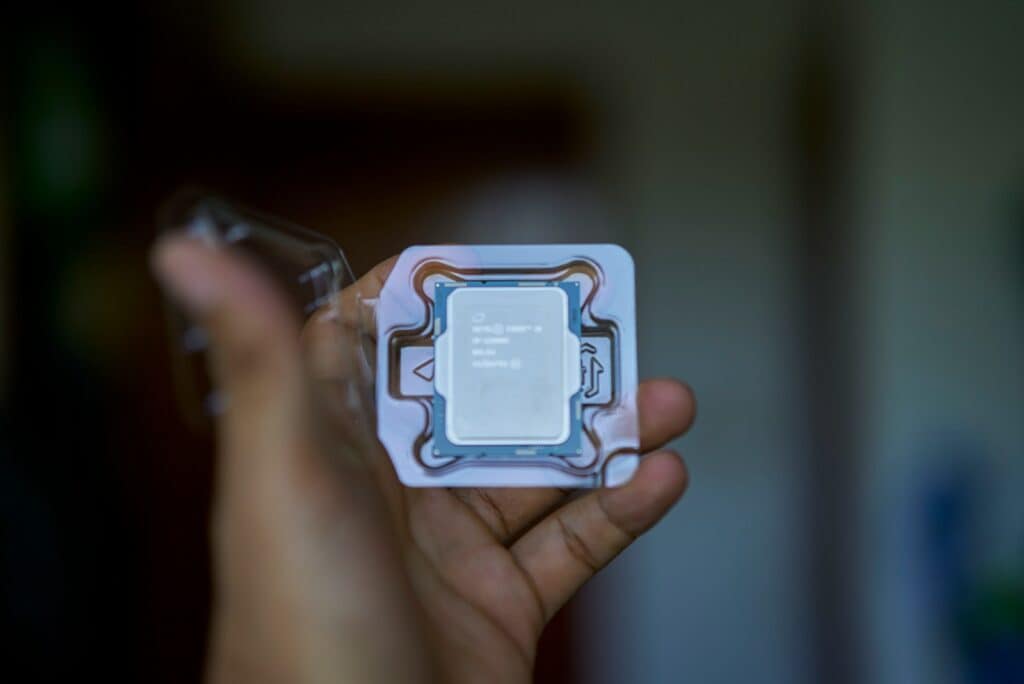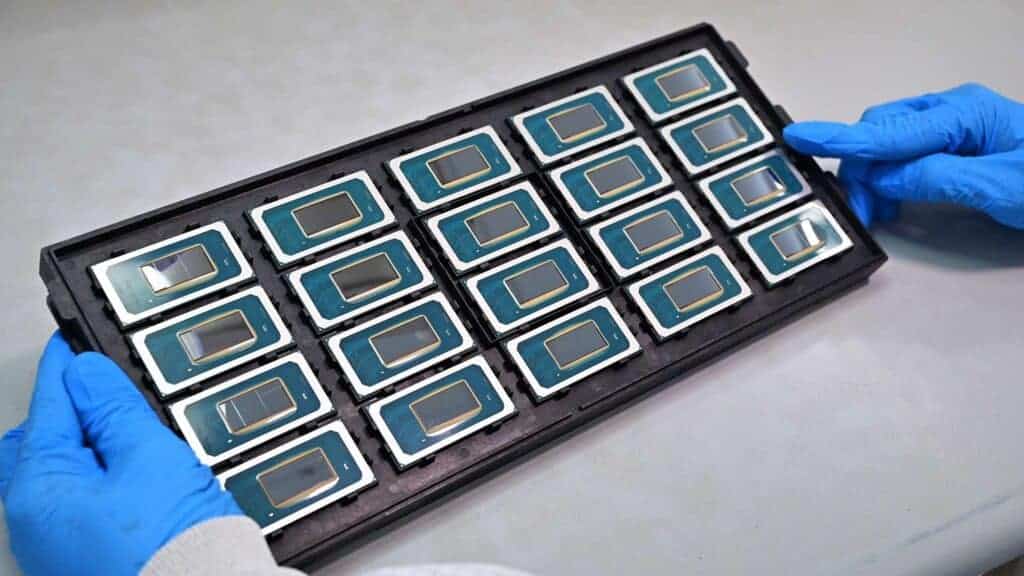
Intel has given its processor generations different codenames over the years, often inspired by nature or geography. Some well-known codenames include Sandy Bridge, Ivy Bridge, Haswell, Broadwell, Skylake, Kaby Lake, and Coffee Lake. Each new generation brings changes to the chip design and features. These processor generations have evolved over the years, each with its own unique set of features and codename. From the early days of Nehalem to the cutting-edge hybrid architecture of Alder Lake and beyond, these codenames represent milestones in Intel’s innovation journey.
This article offers a comprehensive list of Intel’s CPU codenames, providing insight into the technological advancements that have shaped the computing landscape. The codenames help track Intel’s progress in making faster and more efficient chips and give us a peek into the company’s naming style, drawing inspiration from rivers, lakes, cities, and landmarks. Intel has changed its naming scheme a few times since the early days of its processors.
Decoding Intel’s Legacy: A Chronicle of CPU Codenames
From Wilderness to Metropolis: Early Generations (1st to 6th)
| Generation | Codename | Release Year | Key Features |
|---|---|---|---|
| 1st | Nehalem | 2008 | Introduced Intel QuickPath Interconnect and integrated memory controller |
| 2nd | Sandy Bridge | 2011 | Advanced Vector Extensions (AVX), improved integrated graphics |
| 3rd | Ivy Bridge | 2012 | 22nm tri-gate transistors, increased performance, and lower power |
| 4th | Haswell | 2013 | Improved graphics, lower power consumption |
| 5th | Broadwell | 2014 | 14nm process, further power efficiency improvements |
| 6th | Skylake | 2015 | Enhanced CPU and GPU performance, new Skylake-X platform for enthusiasts |

Refining the Craft: 7th to 10th Generations
| Generation | Codename | Release Year | Key Features |
|---|---|---|---|
| 7th | Kaby Lake | 2016-2017 | Faster clock speeds, improved media capabilities |
| 8th | Coffee Lake | 2017-2018 | Increased core counts, higher clock speeds, support for Intel Optane memory |
| 9th | Coffee Lake Refresh, Cannon Lake | 2018-2019 | Minor improvements, Cannon Lake marked Intel’s first 10nm CPUs |
| 10th | Comet Lake, Ice Lake | 2019-2020 | Comet Lake offered higher core counts, Ice Lake brought the Sunny Cove architecture and AI acceleration |

The Hybrid Era: 11th Generation and Beyond
| Generation | Codename | Release Year | Key Features |
|---|---|---|---|
| 11th | Tiger Lake, Rocket Lake | 2020-2021 | Tiger Lake introduced Xe graphics and PCIe 4.0, Rocket Lake brought a new architecture for desktops |
| 12th | Alder Lake | 2021 | Performance hybrid architecture with P-cores and E-cores |
| 13th | Raptor Lake | 2022 | Refined hybrid architecture, improved performance, and efficiency |
| 14th | Raptor Lake Refresh | 2023 | Minor updates to Raptor Lake, higher clock speeds |
| 15th | Arrow Lake | Expected 2024 | New 20A manufacturing process, potential for DDR5-6400 and PCIe 5.0 support |
| 16th | Nova Lake | Expected 2025 | Details are scarce, likely to continue Intel’s focus on hybrid architecture |

Key Takeaways
- Intel uses codenames for each new processor generation
- Codenames often come from nature or geography
- New generations bring changes to chip design and features
Intel Processor Generations and Codenames
Intel’s processor generations span decades of innovation. Each generation brought new features and better performance. The company used unique codenames for its chips during development.
Early Designs and x86 Architectural Foundations
Intel’s journey began with the 4004 in 1971. The 8086 and 8088 chips came next. These laid the groundwork for the x86 architecture. The 80286 added protected mode. The 80386 brought 32-bit computing. The 80486 added an on-chip cache and math coprocessor.
The Pentium brand arrived in 1993. It marked a shift from numbers to names. The P5 microarchitecture powered early Pentiums. The Pentium Pro came next with the P6 design. Pentium II and III followed, improving speed and adding new instructions.
Advancement of Microarchitectures and Performance
The NetBurst architecture debuted with Pentium 4. It aimed for high clock speeds but ran hot. The Pentium M fixed this with a focus on power efficiency. This led to Core and Core 2 processors. They combined desktop power with mobile efficiency.
Nehalem came next. It brought an integrated memory controller and Turbo Boost. Sandy Bridge improved on this with better graphics. Ivy Bridge shrunk the size. Haswell focused on battery life. Broadwell refined the design further.
Modern Intel Technologies and Core Series
Skylake introduced a new socket and DDR4 support. Kaby Lake, Coffee Lake, and Comet Lake built on this base. They added more cores and higher speeds. Ice Lake brought 10nm chips to laptops. Rocket Lake returned to 14nm for desktops but with new tech.
The Core i3, i5, i7, and i9 labels show different performance levels. Higher numbers mean more power. Some chips are “unlocked” for overclocking. Integrated graphics improved over time. This helps with basic tasks and light gaming.
Alder Lake mixed big and small cores. This new design aims to balance power and efficiency. It shows Intel’s push to keep improving its chips.
Market Segmentation and Specialized Intel Products
Intel offers a wide range of processors for different uses. These include chips for everyday computers, powerful workstations, and large data centers.
Portable and Mobile Processing Solutions
Intel makes many chips for laptops and tablets. The Core series has options for basic to high-end laptops. There are i3, i5, i7, and i9 models with varying speeds and features.
For very thin and light devices, Intel has special low-power chips. These include the Y-series and U-series processors. They use less energy to help extend battery life.
Intel also makes Atom processors for budget tablets and small laptops. These focus on low cost and long battery life over high performance.
High-Performance Computing and Enterprise Systems
Intel’s Xeon processors target servers and workstations. They can handle heavy workloads in data centers and for scientific computing. Xeon chips support large amounts of memory and multiple processors working together.
For the most demanding enterprise needs, Intel previously offered Itanium processors. These were made for critical systems that needed extreme reliability.
Intel’s server chips often support ECC memory. This helps catch and fix memory errors in important systems.
Frequently Asked Questions
Intel’s processor generations have evolved over time with various codenames and features. These FAQs address key aspects of Intel’s generational progression and naming conventions.
What is the chronological order of Intel processor generations and their codenames?
Intel’s processor generations follow a sequence from oldest to newest. The order starts with Nehalem and moves through Sandy Bridge, Ivy Bridge, Haswell, Broadwell, Skylake, Kaby Lake, Coffee Lake, and more recent generations. Each name marks a new set of improvements.
How do the performance characteristics vary between different Intel processor generations?
Each new Intel generation often brings speed boosts and better power use. Newer chips tend to have more cores and can do more tasks at once. They also usually run cooler and use less energy than older ones.
Can you provide a historical timeline of Intel’s processor releases with corresponding codenames?
Intel released Nehalem in 2008. Sandy Bridge came out in 2011. Ivy Bridge followed in 2012. Haswell arrived in 2013. Broadwell was next in 2014. Skylake launched in 2015. Kaby Lake came in 2016. Coffee Lake appeared in 2017. More recent releases have continued this pattern.
What are the differences between Intel processor codenames within the same generation?
Codenames in the same generation may show small changes. These could be tweaks to speed, power use, or special features. Some might be made for different devices like laptops or desktops. Others may have improved graphics or added security features.
How do Intel processor generations correlate with release years?
Intel often releases new generations yearly or every two years. For example, Sandy Bridge came out in 2011, while Ivy Bridge followed in 2012. This pattern helps track when each generation hit the market. It also shows how quickly Intel updates its technology.
What are the key features distinguishing each Intel processor generation?
New generations often bring faster speeds and more cores. They may have better graphics built in. Power use usually goes down. Some add new instructions for certain tasks. Others improve how well the chip works with memory. Security updates are common too. Each step forward aims to make computers work better.






